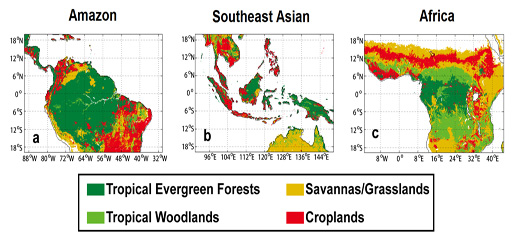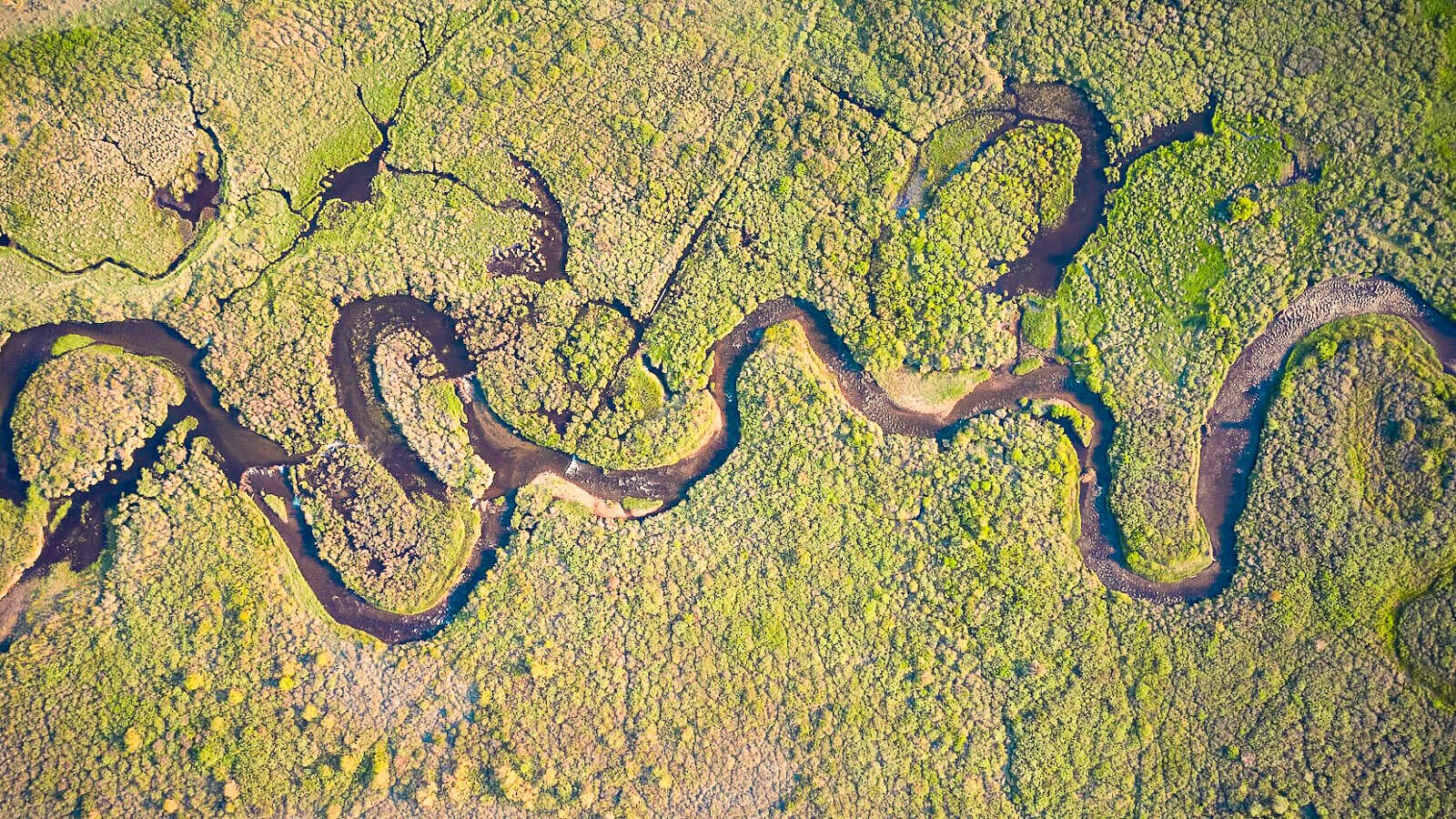Water forms common thread in diverse rainforest ecosystems
By
on
Rainforests, which are so critical to the earth’s climate that they are frequently called the planet’s lungs, are often thought of as a single collection of ecosystems. But researchers at Princeton University and other institutions have found that the availability of water in rainforests varies greatly among different areas of the globe.
Despite this diversity, one thing that links the forests is the need for a minimum level of precipitation to see them thrive through the annual dry season. In recent work, the researchers concluded this threshold, roughly 2,000 millimeters (about 79 inches) a year, applies to global rainforests from the Congo in Africa to South America’s Amazon basin. (This rainfall can be compared to U.S. locations here.)
“They generally get a lot of rainfall,” said Kaiyu Guan, the lead author and a former graduate student at Princeton’s civil and environmental engineering department who is now a post-doctoral researcher at Stanford University. “But there is a threshold below which they begin to get water stressed.”

This rainfall threshold is a consequence of the complex water cycle. Rainforests can usually store water underground during the wet season when rainfall is in surplus. And during the subsequent dry season, due to their deep roots, rainforests can use the stored water from the prior wet season and provide a buffer ability for the dry-season drought. The 2,000-millimeter threshold allows enough wet-season water storage to meet the dry-season water needs by rainforests.
Although the 2,000-millimeter threshold can be applied universally, the researchers found great differences in the amount of water available to rainforests in different parts of the world. In general, the Congo forests receive the least amount of rain of the world’s major rainforests and much of that comes in a relatively short time. The forests of Southeast Asia, in contrast, receive much more rain and that comes almost all year around. The Amazon rainforests experience heavy rainfall, and they in general have less rain than the Southeast Asia, but much more than the Congo, and they receive the rain over a longer period.
“Many people think the conditions in the rainforest and the climate in the rainforest is the same in places like Africa and South America,” said Eric Wood, the Susan Dod Brown Professor of Civil and Environmental Engineering at Princeton and one of the researchers. “Yet the Congo is much, much drier than the Amazon, and the Amazon’s vegetation, particularly at the center of the region, is much heavier.”
To draw their conclusions, reported in the volume of April 2015 in Nature Geoscience, the researchers studied two sets of satellite imagery for vegetation properties. They used the first, from the Moderate Resolution Imaging Spectroradiometer, to measure vegetative greenness and potential to perform photosynthesis; and the second, from the Global Ozone Monitoring Equipment-2, to measure chlorophyll fluorescence as a way to measure photosynthesis. By comparing measurements in the wet and dry seasons, the researchers were able to draw conclusions about the impact of water availability on forest growth.
Because all the forests remained relatively wet over the period, the researchers did not see major decreases in growth or dying trees; but using data from the satellites, they were able to detect drops in photosynthesis linked to a decline in available water. The researchers were then able to use the measurements to compute a threshold of available water below which the rainforests would begin to demonstrate stress. The researchers also used satellite-based measures of rainfall, potential evaporation and groundwater storage to explain the underlying hydrological processes leading to this global pattern.
This hydrological threshold, combined with the conditions experienced in the different areas, could help researchers predict how each of the rainforests would be affected by changing climate. The Congo, with its relatively low water supply, could be vulnerable to a drop in precipitation. In contrast, the Amazon gets so much rain that available sunlight, rather than water, could be the limiting factor to its growth. “The real question is: what is the balance between water and energy,” said Wood. “If you can start to understand how these forests are different in regards to that, then you can start projecting what will happen under climate change.”
Besides Guan and Wood, the paper’s authors included: Kelly Caylor, associate professor, Miaoling Liang, research associate, Ming Pan, research hydrologist, and Justin Sheffield, research scholar, in Princeton’s Department of Civil and Environmental Engineering; Adam Wolf, an associate research scholar in Princeton’s Department of Ecology and Evolutionary Biology; David Medvigy, an assistant professor in Princeton’s Department of Geosciences; Haibin Li of Rutgers University; Jin Wu and Scott Saleska of the University of Arizona; Yadvinder Malhi of Oxford University; John Kimball of the University of Montana; Joe Berry of the Carnegie Institution of Washington; Joanna Joiner and Alexei Lyapustin of NASA.
Support for the research was provided in part by NASA.






